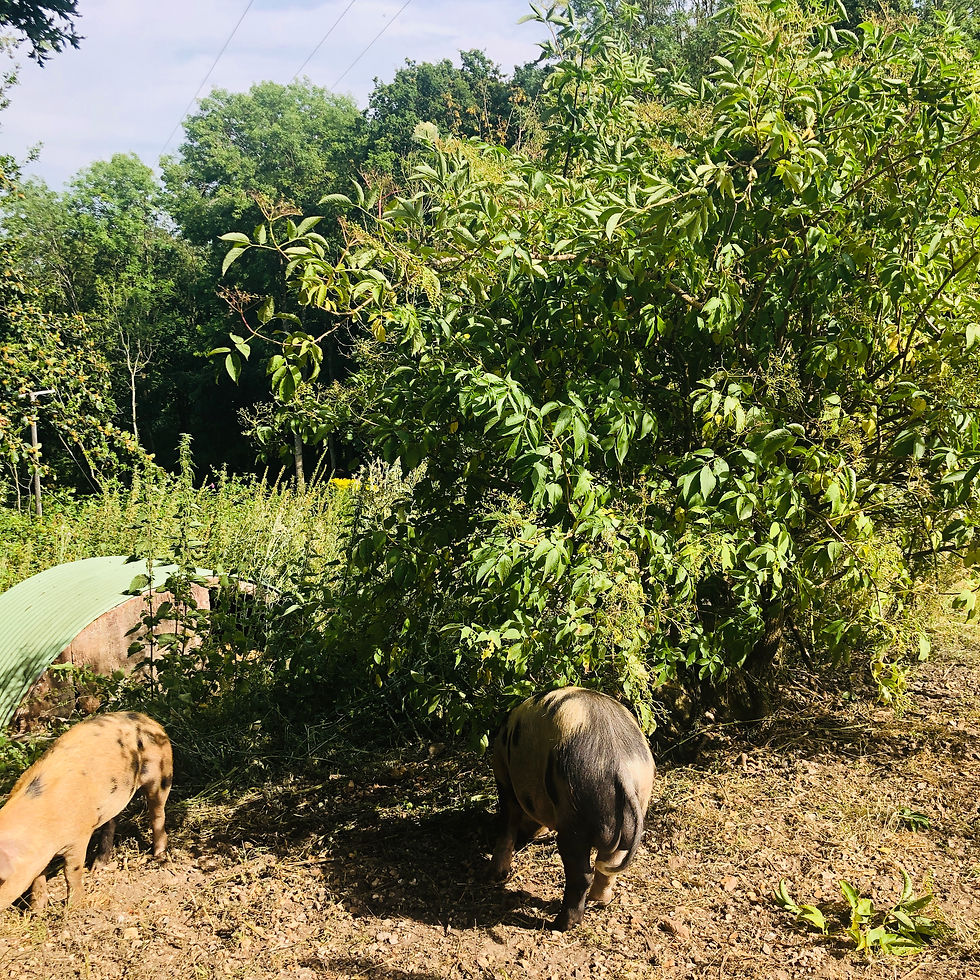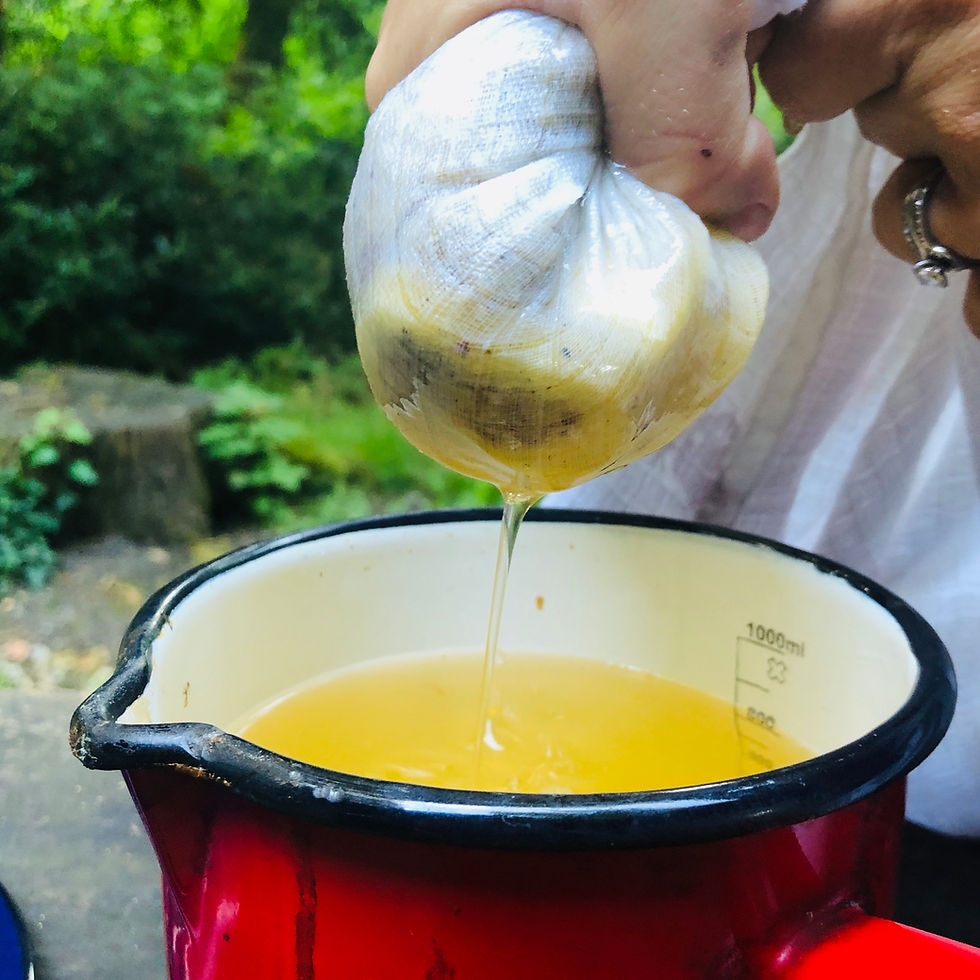How to Make Elderflower Cordial
- Claire
- Jul 17, 2019
- 3 min read
Updated: Nov 3, 2019

We're on holiday in the UK right now and couldn't resist 'glamping' on a farm in the New Forest. On the farm tour we noticed a very late flowering Elder tree and asked the farmer if we could harvest the last flower heads to make elderflower cordial. It's a wonderful flower cordial popular for putting in sparkling water, sparkling wine and gin and tonic.
The farmer was agreeable, the only catch was we had to brave the pig pen to collect the flowers! We needed a diversion, so my son threw our newly picked strawberries for the pigs whilst I avoided getting my toes nibbled and managed to cut the 10 flower heads I needed!

Elder trees flower mainly in May and June and are native to the temperate climates of much of Europe. The trees are small and the leaves are shaped like feathers and are smelly if you crush them. The flowers contain nectar for pollinating insects and turn into dark red berries popular with birds. Elder may be as prevalent as it is in the UK because people used to believe that an Elder tree outside their house would keep the devil away!
Elder is a fascinating species for Forest School practitioners because of its many uses and opportunities for nature education. The wood is used for carving, whittling and crafts, the flowers can also be used to make wine and tea, and the berries can be made into preserves, wine, and baked in pies (we're here for a month so if we find some berries one of these will be our next project!).

Back to making our elderflower cordial, once we picked the flowers we needed to find the rest of the ingredients, the only one being slightly tricky to find was citric acid, but a nice lady in the local health food shop gave me 40g for free when I only had contactless payment and the cost was only 70p! You can find citric acid in most health food stores or source from Amazon or iHerb.
Ingredients
Makes 1 litre of cordial
10 elderflower heads
40g citric acid
500g caster sugar
1 lemon
750-1000 ml of water (depending on the size of your flower heads)
Out at Midgham Farm in the New Forest we were allowed to light our own campfires so I couldn't resist attempting to make the cordial on the campfire but you can use a standard hob if you like. A bit of ash in the cordial was unavoidable but it gave the final result an interesting smokey flavour!
We shook the flower heads gently to remove any insects and gave them a rinse. We boiled 1 litre of water then added the sugar and citric acid until it was all dissolved. It only took a minute the fire was so hot! We then added the flowers and one sliced lemon to the pot and left it to simmer for a few minutes.

We left it covered in a cool dark place for two days so that the flavours could develop. We then used a muslin cloth to strain out the mixture resulting in a smooth cloudy green-yellow liquid.
We poured the cordial into a couple of plastic bottles we had lying around since we hadn't prepared for a cordial making session (this didn't make for a very pretty picture!).
We finally got to try some added to sparkling water and it tasted like English summer in the glass (with an added twist of campfire!). We have a bottle to bring home for our Forest School learners to try, and maybe we'll have the opportunity to make some elderberry jam to bring home too.
About Claire
Claire is a mum to two young (and sometimes wild) children and enjoyed a very outdoorsy childhood collecting acorns, making daisy chains and sifting dirt to get the perfect pile. Once upon a time Claire was an enthusiastic ultimate frisbee player and recently taught pre-school sports classes. Claire is on a mission to help City kids experience a wilder childhood through the Forest School approach to learning and founded Wildlings offering Forest School and environmental education in Singapore to do this.


Comments